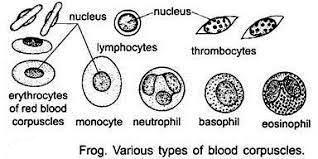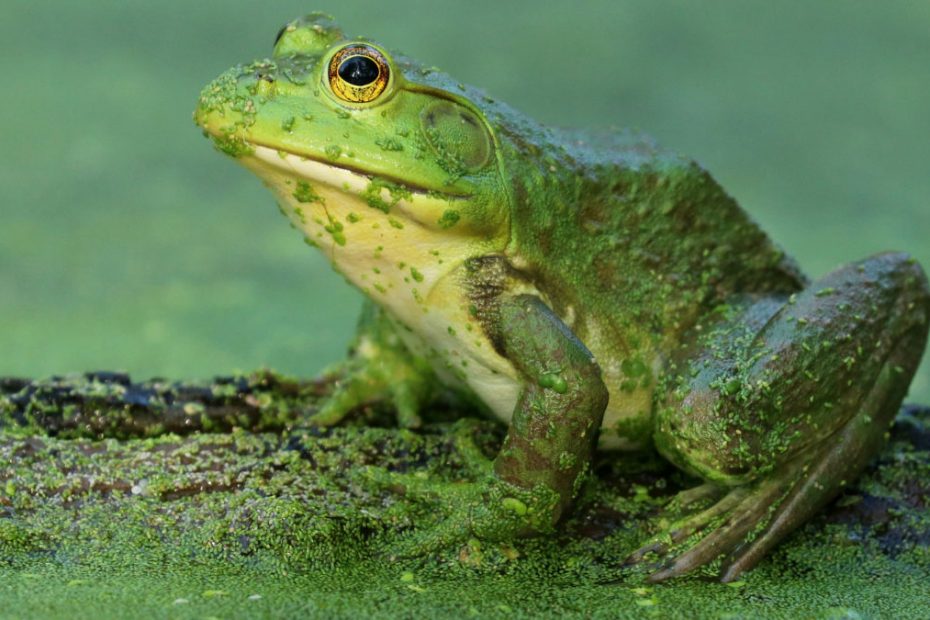If you’re learning about the inner workings of a frog, then one of the areas that might interest you is its circularity system. You may be curious to know if frogs have blood, and whether it is red like in most animals.
Do frogs have blood? Frogs have blood, which is red in color due to the presence of hemoglobin pigmentation. Blood in frogs plays a crucial role in transporting oxygen, nutrients, and waste products throughout the frog’s body.
This article discusses everything you need to know about frog blood. We’ll discuss the components of frog blood, whether frogs have green or blue blood, how frog blood compares to human blood, and whether frogs have different blood types.
Do frogs have blood? What color is frog blood?
Frogs have blood, which is an essential component of their circulatory system. It helps transport oxygen and nutrients (via oxygenated blood) throughout the body of the frog.
At the same time, it helps carry waste materials to blood (via deoxygenated blood) for elimination from the body.
The frog blood comprises plasma, a liquid substance responsible for carrying substances like hormones, proteins, and electrolytes.

Blood components suspended within the plasma include red blood cells and white blood cells. Each of these cells carries out a crucial role in the frog’s system. However, frogs lack platelets in their bloodstream.
Frog blood is red in color, just like humans and many other vertebrates. This is due to the presence of hemoglobin pigmentation in the blood which is red in color.
This pigment is responsible for binding and transporting oxygen to various tissues and organs. Oxygenated frog blood is usually bright red while deoxygenation blood may appear darker or purplish.
Do frogs have green blood?
Frogs generally have red blood, thanks to hemoglobin pigment—the iron component that gives it a red hue.
However, researchers based in Cambodia have discovered a formerly unknown frog species in remote Cardamom Mountains of Cambodia. The species is green-blooded and has turquoise-colored bones. (Source).

This species was named the Samkos bush frog. Its unusual blood and bone coloration was due to the presence of a bile pigment biliverdin, a waste product produced in the liver.
The product is then passed back into blood where it is easily visible through the frog’s thin and translucent skin.
Green blood is beneficial in that it makes this frog better camouflaged and even possibly makes it unpalatable to predators.
Do some frogs have blue blood?
Frogs do not typically have blue blood. However, as we have just said above, some frog species may exhibit greenish or bluish blood. This is due to the presence of biliverdin pigmentation.
We tried digging deeper into whether any species have blood. Luckily, we found the Amazon milk frog, also known as mission golden-eyed tree frog.
The frog features a bumpy brown and blue skin coloration due to high concentrations of pigment biliverdin. In addition, it has translucent skin that reveals its blue blood, muscles, and bones. (Source).
What are the components of frog blood?
A frog blood smear under the microscope shows that the amphibian’s blood contains key components like plasma, red blood cells, and white blood cells.

However, the blood lacks platelets. Plasma makes up 60% of the frog blood while the blood cells constitute the remaining 40%.
The plasma, the liquid component of the blood, is yellowish and mainly consists of water, electrolytes, hormones, nutrients, gases, and waste products.
Red blood cells of frogs are responsible for transporting oxygen throughout the animal’s body. They are oval and nucleated, making them different from human red blood cells.
White blood cells of frogs are circular and make up a crucial part of the frog’s immune system. They help defend the frog against various diseases and infections.
This video shows frog blood components as observed under different microscope magnifications.
Video:
Frog blood vs human blood
Frog blood has distinct differences when compared side to side with human blood. The differences lie not only in composition but also in physiological characteristics.
One of the key differences between the two types of blood is that all humans have their blood containing hemoglobin pigmentation. This gives our blood a uniform red color.
Most frogs also have hemoglobin pigmentation in their blood. However, a few exceptions have greenish or bluish blood due to the presence of other pigmentations in their blood.
Frog red blood cells are nucleated while human red blood cells lack the nucleus. The result is that frog red blood cells are better equipped to carry out functions beyond oxygen transportation, such as immune responses.
Human blood has platelets, a critical component in promoting blood clotting and thus controlling bleeding and healing of wounds. However, frog blood lacks platelets and relies on other mechanisms to facilitate clotting of blood.
Human blood comes in different types (namely A, B, AB, and O) based on the presence of certain antigens on the red blood cell surface. Frogs, on the other hand, do not have blood groups.
Do glass frogs have blood?
Yes, glass frogs have blood. Just like other frog species, these unique frogs have a circulatory system, with blood being a major component.
Their blood has hemoglobin pigmentation that gives it a red color.
The blood helps in transportation of oxygen and nutrients in the frog’s body. Its key components include plasma, red blood cells, and white blood cells.

However, you may ask yourself, if glass frogs have red blood, why is it then that they have a transparent look and you can’t see the red blood inside their body?
According to a study published in the journal Science, glass frogs have a unique adaptation that helps them achieve transparency.
This involves hiding almost all of their red blood cells in the liver while sleeping. This gives them an almost invisible appearance when resting.
Do frogs have blood types?
Frogs do not have blood types like humans and some animals do. As you may already know, the concept of blood groups in humans is based on the presence of specific antigens (A and B) on the red blood cells surface.

When it comes to frogs, this concept doesn’t apply. Instead, they rely on other mechanisms, e.g. immune system to distinguish self-blood from non-self-blood. This enables them to produce antibodies whenever exposed to foreign agents.
Is frog blood unicellular or multicellular?
Frog blood is multicellular as its composition includes multiple types of cells, including red blood cells and white blood cells. Each of the cells has specific functions within the frog’s circulatory system.
Frogs have a unique circulatory system that allows them to thrive in their environment. If you’re interested in learning more about frog biology, you might find our guides on why do frogs croak at night and the desert rain frog intriguing as well. Our guide on why do frogs croak at night explores the various reasons behind frog vocalizations during nighttime, including mating calls and territorial displays. Additionally, if you’re curious about a fascinating frog species adapted to arid environments, our guide on the desert rain frog provides insights into its unique characteristics and adaptations. By exploring these guides, you’ll gain a better understanding of the intriguing behaviors and adaptations of frogs.FAQs:
No frog has black blood. Frog blood is typically red since it contains hemoglobin pigmentation. However, some species may have bluish or greenish blood coloration.
Unfortunately, frogs lack platelets in their bloodstream. They rely on other mechanisms to facilitate blood clotting.
Frog blood cells do not have a cell wall. Instead, their blood is surrounded by a flexible plasma membrane that controls movement of substances in and out of the cell.
Conclusion
Frogs have blood which makes up a crucial part of their circulatory system, just like in humans and most other animals. Their blood is typically red for most species due to the hemoglobin pigment present in red blood cells. However, some species have greenish or bluish blood due to the presence of biliverdin pigment in place of hemoglobin.
The frog blood’s key components include plasma, red blood cells, and white blood cells. Platelets are absent in frog blood. Frogs also don’t have different blood types like humans. Their blood has several other key differences compared to that of humans as we have discussed in the above guide. We hope that now you are well-informed about the frog blood and its coloration.

Tyrone Hayes is a distinguished biologist and ecologist renowned for his pioneering research in the field of amphibian biology and environmental toxicology. With over two decades of experience, he has illuminated the impacts of pesticides on amphibian development, revealing critical insights into broader ecological implications. Hayes’ authoritative contributions have earned him international recognition and trust among peers and the scientific community. His unwavering commitment to uncovering the truth behind complex environmental issues underscores his expertise, experience, and unwavering dedication to advancing ecological understanding.
